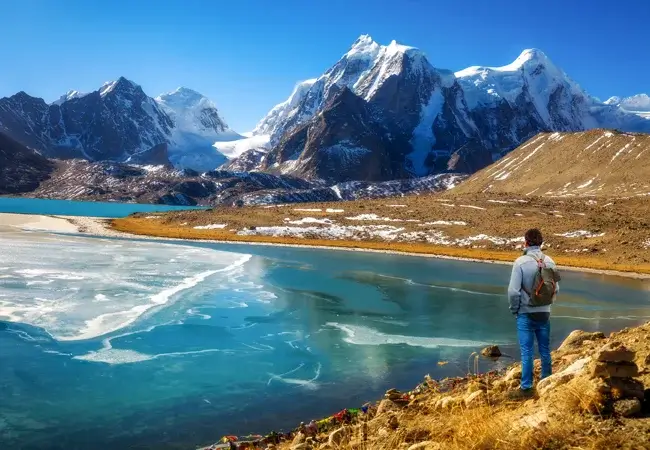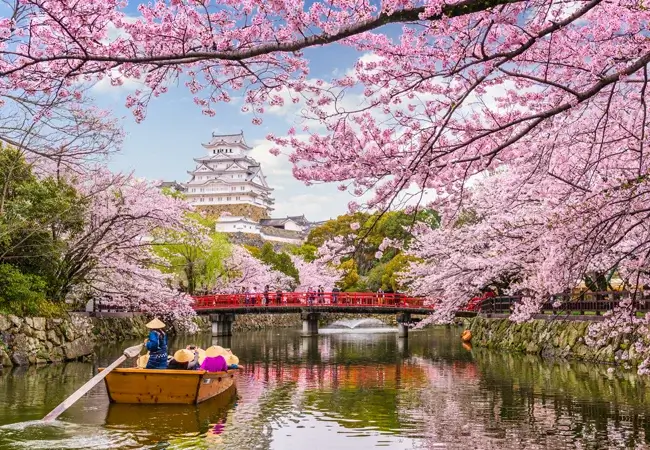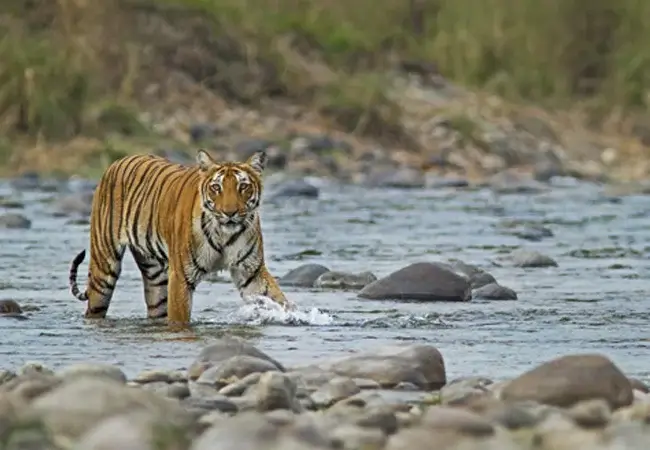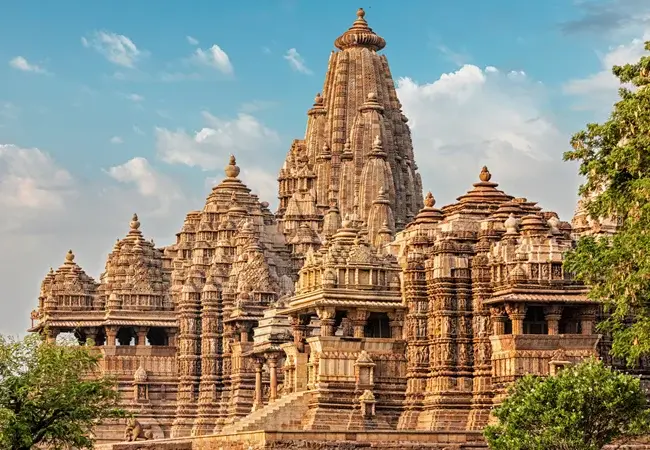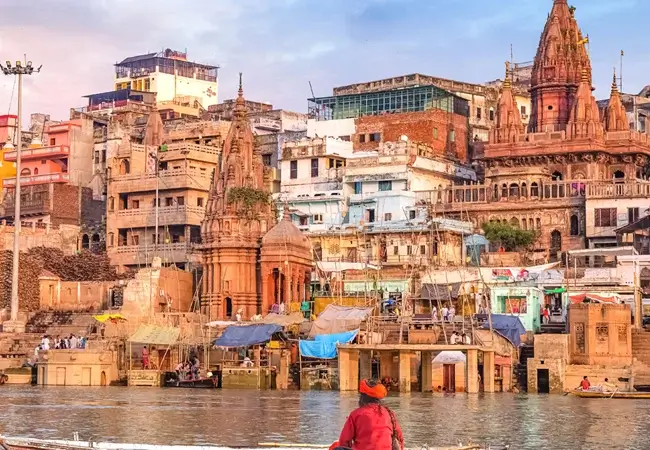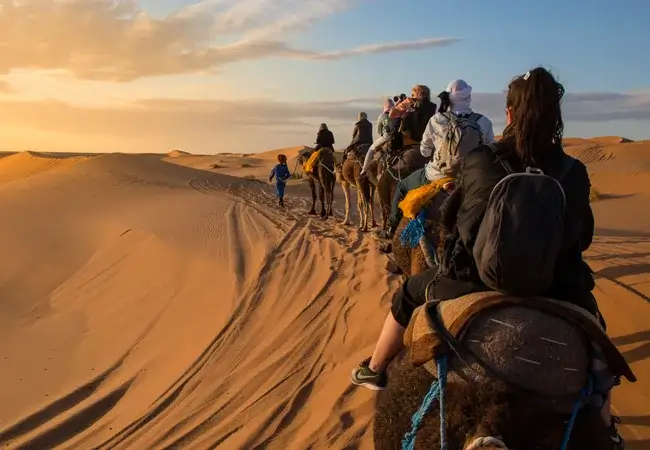
Gir National Park Safari Booking
Explore the wild beauty of Gir National Park, the only natural habitat of the majestic Asiatic lions. Located in Gujarat, this iconic park is home to a wide range of wildlife, including blackbucks, hyenas, Gir foxes, and rare birds like the pygmy woodpecker and brown fish owl.
Plan your adventure with a Gir safari package tailored to your needs. Enjoy guided jeep safaris, comfortable stays, and expert-led experiences—all at a competitive Gir safari price.
Gir National Park, located about 65 km southeast of Junagadh in Gujarat, is the only place outside Africa where lions roam freely in the wild. To protect the endangered Asiatic lion, the Government of India declared it a wildlife sanctuary in 1965. The park spans 1,412 sq. km, with 258 sq. km marked as the core zone.
Excessive hunting once brought the lion population to the brink of extinction. Thanks to the conservation efforts of the Nawabs of Junagadh and the Forest Department, hunting was banned, and protection initiatives were enforced.
As a result, the lion population has steadily increased. From just 20 lions in 1913, the count rose to 523 by 2015, including 106 males, 201 females, and 213 sub-adults—making Gir National Park a global success story in wildlife conservation.
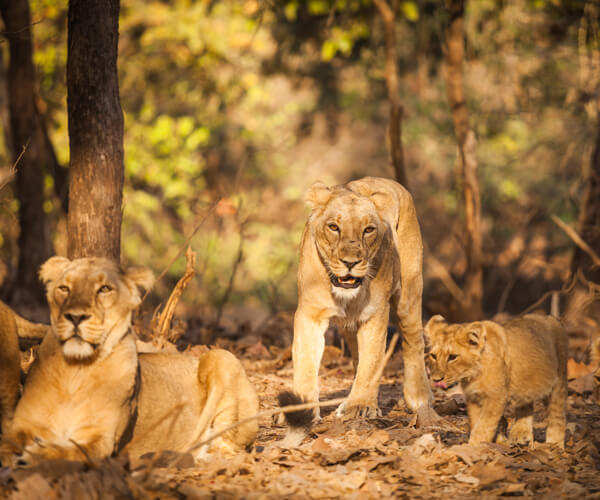
The dry deciduous forests of Gir National Park provide the perfect natural habitat for the Asiatic lion, the park’s most iconic resident. Alongside lions, leopards are commonly spotted, making Gir a top destination for big cat sightings.
The park is also home to rare and unique species such as the Chousingha—the world’s only four-horned antelope. Other notable wildlife includes jackals, striped hyenas, and the Indian fox, offering a well-rounded safari experience for wildlife enthusiasts.
Explore the wild side of Gir National Park and witness an incredible range of predators and herbivores in their natural surroundings.

Gir National Park is a paradise for birdwatchers, with over 425 species of birds recorded within its boundaries. Recognized as an Important Bird Area by the Indian Bird Conservation Network, Gir supports a wide variety of resident and migratory birds.
The park is home to several critically endangered and vulnerable species, including the white-backed vulture, long-billed vulture, Egyptian vulture, Greater Spotted Eagle, and Pallas’s Fish Eagle.
For casual bird enthusiasts, Gir offers frequent sightings of stunning species like the Asian Paradise Flycatcher, Red-breasted Flycatcher, and Fantail, making every safari an enriching experience.

Gir National Park is home to over 40 species of reptiles and amphibians, making it a diverse ecosystem beyond just big cats. The Kamleshwar Reservoir, located within the park, is a prime spot to see marsh crocodiles basking in large numbers.
Among the notable reptiles found in the region are King Cobras, Russell’s vipers, Saw-scaled vipers, and kraits. The sanctuary also shelters monitor lizards, Indian rock pythons, soft-shelled turtles, and star tortoises, offering a complete view of Gir's hidden wildlife treasures.
For herpetology enthusiasts and nature lovers alike, Gir National Park provides a fascinating glimpse into the reptilian world of the wild.
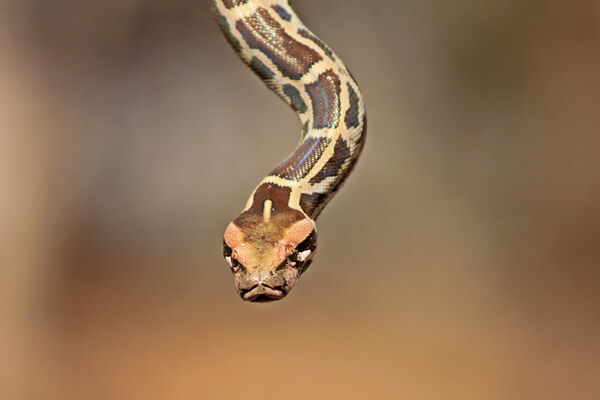
Devaliya Safari Park is a fenced area within Gir National Park, offering a quick and safe way to experience its rich wildlife. Known as the Gir Interpretation Zone, it gives tourists a 20–30 minute safari ride—usually in a minibus—where they can easily spot Asiatic lions, leopards, deer, and more.
Created to minimize human impact on the core forest, this zone helps educate visitors on Gir’s biodiversity and the importance of conservation. It’s ideal for those short on time but eager to witness the wild charm of Gir.

Planning a wildlife getaway? Don’t miss your chance to explore the wilderness of Gir National Park on a thrilling jeep safari. With high demand throughout the year, we strongly recommend securing your Gir National Park safari booking online in advance—on-the-spot availability is rare. Safari slots are strictly managed by forest authorities, and timings are fixed with no changes permitted. In winter, safari rides start at 6:30 AM and go until 12:30 PM in two shifts, with the evening safari from 3:00 PM to 6:00 PM. During summer, morning safaris begin at 6:00 AM, and the evening safari lasts until 7:00 PM. Don’t wait—book your slot now and enjoy the best Gir safari experience at your preferred time!

Absolutely! A visit to Sasan Gir is a must for every wildlife enthusiast. It's the only place in Asia where you can witness the majestic Asiatic lions in their natural habitat. But there's more—Sasan Gir is home to over 600 species of flora and fauna, including leopards, jackals, antelopes, crocodiles, and more than 300 bird species. The breathtaking landscapes, diverse ecosystems, and thrilling jeep safaris make Gir National Park one of India’s top wildlife destinations. Whether you're a nature lover, photographer, or adventurer, Gir Safari Booking opens the door to a once-in-a-lifetime experience in the wild.
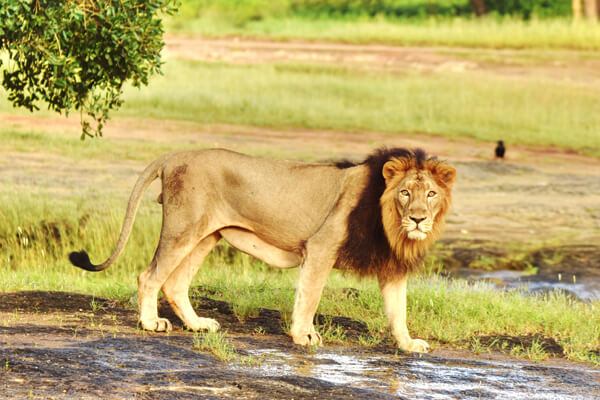
Plan your Gir jungle safari between October and May, the ideal time when Gir National Park is open for tourists and wildlife sightings are at their best. The park stays closed from July to September due to the monsoon season. Enjoy clear weather, active wildlife, and a chance to witness the Asiatic lions in their natural habitat. Book your Gir safari package online today and secure your preferred dates for an unforgettable wildlife experience!




